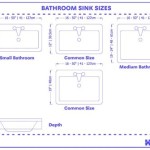How to Remodel a Bathroom Shower with Tile: A Comprehensive Guide
Remodeling a bathroom shower with tile is a significant undertaking that can dramatically improve the aesthetics and functionality of a bathroom. It requires careful planning, meticulous execution, and a degree of familiarity with basic construction techniques. This article provides a detailed overview of the process, covering key aspects from initial planning to final grouting.
Planning and Preparation: The Foundation of a Successful Remodel
Before any demolition or construction begins, a comprehensive plan is essential. This phase will dictate the scope of the project, material selection, and overall budget. Accurate planning prevents costly mistakes and ensures the finished shower meets the homeowner's expectations.
The first step is to assess the existing space. Evaluate the size and layout of the current shower. Consider any plumbing limitations and note the location of existing water supply lines and drain. Take precise measurements of the shower area, including the height, width, and depth. These measurements will be crucial for estimating material quantities and planning the tile layout.
Next, define the desired aesthetic. Research different tile options, including ceramic, porcelain, glass, and natural stone. Each material offers unique properties in terms of durability, water resistance, and visual appeal. Consider the overall style of the bathroom and choose tiles that complement the existing décor. Websites like Pinterest and Houzz can provide inspiration and showcase various tile designs.
Develop a detailed budget. Itemize all anticipated costs, including the cost of tiles, mortar, grout, waterproofing membrane, tools, and any necessary plumbing or electrical work. It is prudent to add a contingency fund of approximately 10-15% to cover unexpected expenses.
Obtain any necessary permits. Depending on the local building codes, a permit may be required for plumbing or structural modifications. Contact the local building department to determine the permit requirements for the specific project.
Create a realistic timeline. Remodeling a shower with tile can be a time-consuming process, potentially taking several days or even weeks, depending on the size and complexity of the project. Factor in time for demolition, plumbing adjustments, waterproofing, tiling, grouting, and sealing. Adhering to a well-defined schedule helps to minimize disruptions and ensures the project stays on track.
Demolition and Waterproofing: Preparing the Substrate
Prior to installing new tile, the existing shower must be properly prepared. This involves removing the old tiles, inspecting the underlying substrate, and applying a waterproofing membrane. These steps are critical for ensuring the long-term integrity and water resistance of the shower.
Begin by disconnecting the water supply to the shower. Locate the shut-off valves for the hot and cold water supply lines and turn them off. If the valves are not readily accessible, it may be necessary to shut off the main water supply to the entire house.
Protect the surrounding areas. Cover the bathroom floor with drop cloths to prevent damage from falling debris. Use plastic sheeting to seal off doorways and prevent dust from spreading to other parts of the house.
Remove the existing shower fixtures, including the showerhead, faucet, and any shelves or soap dishes. Carefully detach the drain cover and plug the drain opening to prevent debris from entering the drainpipe.
Demolish the existing tile and backing material. Use a hammer and chisel or a demolition hammer to remove the old tiles. Be careful not to damage the underlying studs or plumbing. Dispose of the debris properly in a designated container.
Inspect the substrate. Once the old tile and backing are removed, inspect the underlying studs and plywood or cement board for any signs of water damage, rot, or mold. Replace any damaged materials before proceeding.
Apply a waterproofing membrane. A waterproofing membrane is essential for preventing water from penetrating the substrate and causing damage. There are several types of waterproofing membranes available, including liquid-applied membranes and sheet membranes. Follow the manufacturer's instructions for application. Typically, the membrane is applied to all surfaces of the shower enclosure, including the walls, floor, and curb (if applicable).
Ensure proper drainage. Verify that the shower floor is properly sloped towards the drain. A minimum slope of 1/4 inch per foot is recommended to ensure adequate water drainage.
Tile Installation: Achieving a Professional Finish
The tile installation process requires precision and attention to detail. Proper layout, cutting, and setting techniques are crucial for achieving a professional-looking and durable shower.
Plan the tile layout. Before applying any mortar, dry-fit the tiles to determine the optimal layout. Start by finding the focal point of the shower, typically the center of the back wall. Lay out the tiles from the center outwards, ensuring symmetrical spacing and alignment. Adjust the layout as needed to minimize the number of small cuts.
Mix the mortar according to the manufacturer's instructions. Use a notched trowel to apply a thin, even layer of mortar to the substrate. The size of the trowel notch will depend on the size and type of tile being used.
Set the tiles, pressing them firmly into the mortar. Use tile spacers to maintain consistent spacing between the tiles. Check the tiles for level and alignment using a level and a straightedge. Make any necessary adjustments before the mortar sets.
Cut the tiles as needed. Use a wet saw to cut tiles to fit around corners, pipes, and other obstructions. Wear safety glasses and gloves when operating the wet saw.
Allow the mortar to cure for at least 24 hours before grouting. This will ensure that the tiles are securely bonded to the substrate.
Grout the tiles. Remove the tile spacers and clean the grout lines with a grout saw or scraper. Mix the grout according to the manufacturer's instructions. Apply the grout to the tile surface using a grout float, working it into the grout lines. Remove any excess grout from the tile surface with a damp sponge.
Clean the tiles thoroughly. After the grout has cured for 24-48 hours, clean the tiles with a grout haze remover to remove any remaining grout residue. Polish the tiles with a clean, dry cloth.
Seal the grout. Apply a grout sealer to protect the grout from staining and water damage. Follow the manufacturer's instructions for application.
Install the shower fixtures. Reinstall the showerhead, faucet, and any other shower fixtures. Connect the water supply lines and check for leaks.
Caulk the seams. Apply caulk to all seams and joints, including the corners of the shower enclosure, the edges of the tile where it meets the tub or shower pan, and around the shower fixtures. Use a mildew-resistant caulk to prevent mold growth.
This comprehensive guide provides the foundational knowledge for undertaking a DIY bathroom shower remodel with tile. Consult with qualified professionals for tasks that require specialized skills, such as plumbing or electrical work.

6 Walk In Shower Tile Ideas For Your Bathroom Remodel Dave Fox

How To Remodel A Shower On Budget Bathroom Ideas And Inspiration The Tradewinds Imports Blog

6 Walk In Shower Tile Ideas For Your Bathroom Remodel Dave Fox

Diy Modern Master Bath Remodel Part 3 Custom Tile Shower Install Pneumatic Addict

Diy Shower Remodel Start To Finish Part 1 Of 2
Shower Remodel Guide Tips And Tricks For A Successful Renovation
Tiled In Tiling A Bathroom Remodel For Luxury Spa Feel Hdr Remodeling

How To Remodel A Shower On Budget Bathroom Ideas And Inspiration The Tradewinds Imports Blog

30 Small Bathroom Shower Tile Ideas Best Tips For 2024

Shower Remodel Guide Doors Tiles And More Modernize







